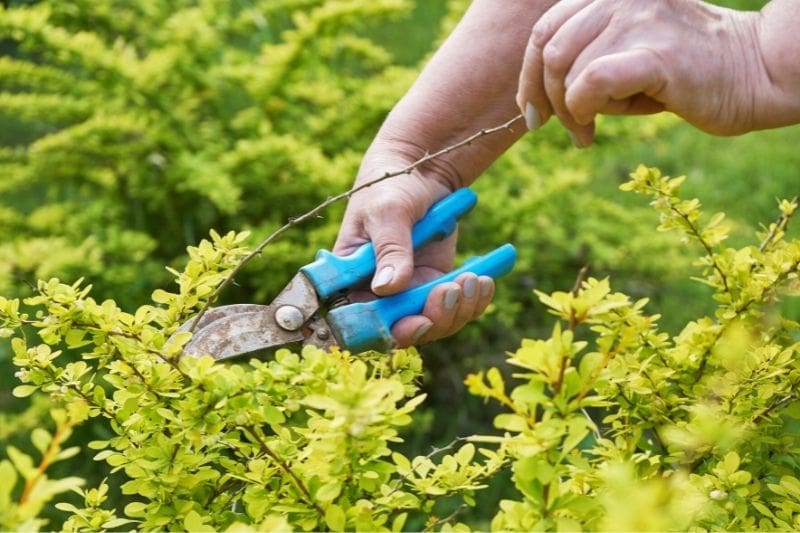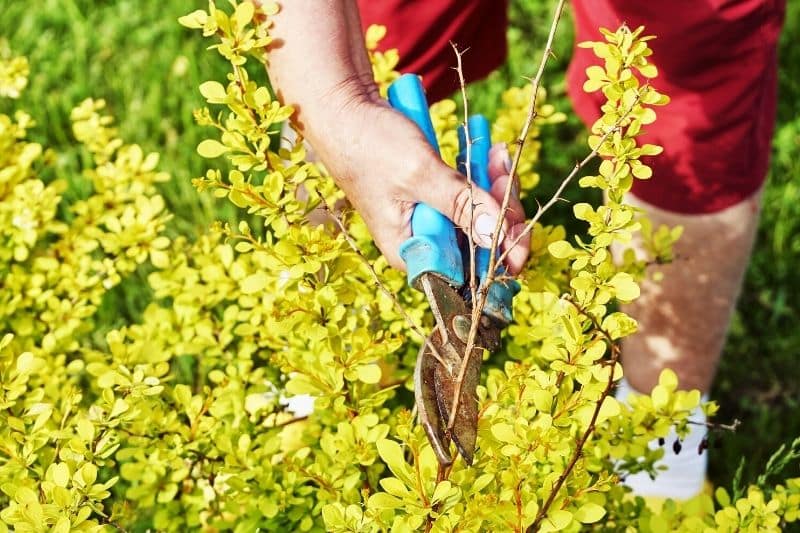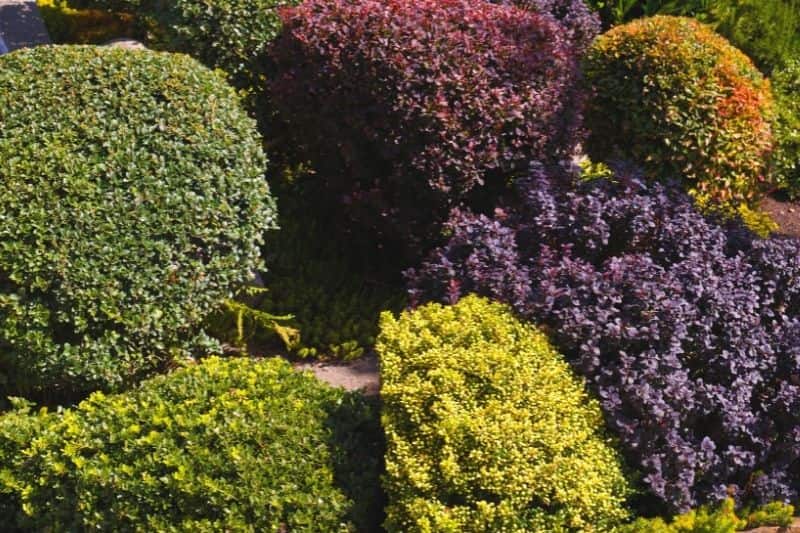The Berberis are magnificent bushes, highly interesting for creating a defensive hedge or adding colour to a shrub and perennial bed. The beautiful coloured foliage of deciduous varieties also makes a striking feature in rockeries or borders. Evergreen varieties stand out with their abundant flowering, which later produces ornamental fruits that birds adore. This bush is easy to grow, requires no maintenance and tolerates pruning perfectly.
Discover our advice and techniques for successfully pruning Berberis in your garden.

Overgrown and unsightly branches can be removed with secateurs
Why prune a Berberis?
Easy to grow, the Berberis is a bush with a naturally dense and bushy habit. When grown in beds or informal hedges, it doesn't require pruning. However, you may prune it to create a neat hedge or simply to control its size. This small bush can also be shaped into a ball to accompany boxwood and other topiary plants. You can also remove old branches or carry out hard pruning to rejuvenate a plant or encourage denser growth. Be aware that this last operation will result in no flowering for 2 years, as flowering occurs on stems that are 2 years old.
When to prune Berberis?
For evergreen varieties, carry out light balancing pruning after spring flowering, between May and July. Remove the oldest branches every 3 or 4 years, except for the cultivars 'Darwinii' and 'Stenophylla'.
For deciduous varieties, hedge pruning should be done in late winter, around March, before new growth begins. As Berberis tolerates pruning well, you can repeat the operation every year, or even more frequently to encourage foliage growth. You can also severely cut back old shoots or even cut the entire bush back to its base every 3 to 4 years during winter.

Remove dead branches from your Berberis with secateurs
How to prune a Berberis?
Required equipment
Equip yourself with thick gardening gloves and protective clothing to shield yourself from the thorny branches of the Berberis. To cut the branches, you'll need secateurs, shears, or even loppers to remove old shoots. Don't forget to disinfect your tools with alcohol before use to prevent the spread of diseases between plants. For linear hedge pruning, you can use string stretched between two posts.
Balancing pruning
Cut back branches that are too overgrown or that unbalance the shape of your Berberis using secateurs or shears. This will give you a bush with a more rounded and bushier shape. If you want fruiting, don't remove all the flowering stems.
Maintenance pruning
Remove dead and dried stems at their base or at an intersection using secateurs or loppers.
Formal hedge pruning
Pruning Berberis hedges is mainly done with shears or hedge trimmers. To create a straight hedge, you can use a string line. Place a tall stick or stake at each end of the hedge. Stretch string between the two posts at the desired cutting height. Prune your Berberis following the string with your shears. You can also use a plumb line for a perfect vertical cut.
Rejuvenation or hard pruning
Hard pruning rejuvenates an old plant and can be done every 3 to 4 years, mainly on deciduous Berberis. Using loppers and secateurs, cut back old branches to the stump. Although Berberis is not demanding, you can add well-rotted compost at its base to aid recovery in spring. Note that there will be no flowering or fruiting for the 2 years following this hard pruning.

Pruned Berberis will add colour alongside boxwood in a topiary garden
To go further:
- Discover all our Berberis varieties
- Read our article to learn all about Berberis: planting, pruning and care



































Comments